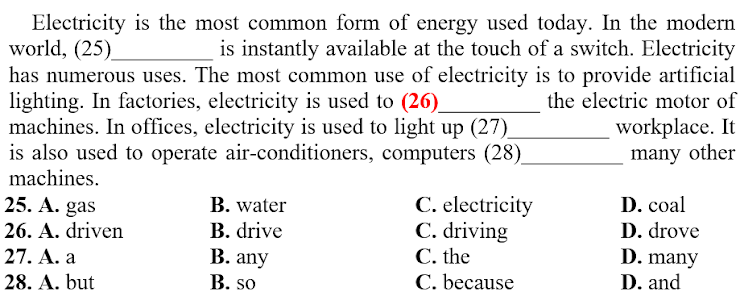Read the following passage and mark the letter A, B, C or D on your answer sheet to indicate the correct word or phrase that best fits each of the numbered blanks.
Culture has a strong influence on non–verbal communication. Even the simple act of looking someone in the eye is not at all that simple. In the USA, Americans are (5) ______ to look directly at people when speaking to them. It shows interest in what they are saying and is thought to carry a (6) ______ of honesty. Meanwhile, in Japan and Korea, people avoid long periods of eye contact. It is considered more polite to look to the side during a conversation. The Lebanese, (7) ______, stand close together and look intensely into each other's eyes. The action shows sincerity and gives people a better sense of what their counterparts want. Given such differences with even the most common expressions, people (8) ______ travel or work abroad have a real need to learn the other culture's body language. People tend to be unaware of the messages they are sending to others. So, it is (9) ______ to consider your own body language before dealing with people from other cultures. Knowing about the body language of friends, clients, and colleagues can be very helpful in improving understanding and avoiding miscommunication.
Điền vào ô số 9
A. usefulness
B. useful
C. useless
D. used


Kiến thức: Từ vựng
Giải thích:
usefulness (n): sự hữu ích useful (adj): có ích
useless (adj): vô dụng used (adj): đã qua sử dụng/ trở nên quen thuộc
So, it is (9) useful to consider your own body language before dealing with people from other cultures.
Tạm dịch: Vì vậy, rất hữu ích để xem xét ngôn ngữ cơ thể của riêng bạn trước khi tiếp xúc với những người từ các nền văn hóa khác.
Chọn B